Retro Replay Review
Gameplay
Rodney’s Funscreen assembles five bite-sized mini-games on a simple main menu, allowing young learners to jump straight into activities without fumbling through levels. Each title focuses on a distinct skill—finding objects, creative painting, letter recognition, pattern matching, and counting—that gradually build a child’s computer fluency and cognitive awareness. It’s straightforward to navigate: a colorful panel of icons sits at the screen’s center, and one click transports the player directly into Dinky’s House, Guess-o-Matic, Barber Joe, Alphabeeps, or Too Many Monsters.
In Dinky’s House, preschoolers practice object recognition and memory by clicking closed windows in search of the eponymous character, Dinky. When the child finds him, the scene shifts to the interior, where clicking on furniture and décor triggers small animations—Dinky tickling himself, bouncing on the couch, or peeking out behind the piano—rewarding exploration and reinforcing cause-and-effect relationships. This gentle discovery loop encourages experimentation, making early mouse control feel like play instead of instruction.
Guess-o-Matic infuses a rudimentary matching challenge: kids reveal cards marked with question marks until they locate the hidden illustration displayed at the bottom. The thrill of uncovering surprises drives engagement, and the simplicity of left-clicking to flip cards helps hone fine motor skills. Barber Joe takes a creative detour, offering three blank head outlines—Joe, Jane, and Woof the dog—and a palette of brushes, colors, and shapes to customize each portrait. Young artists can drag tools across the canvas, learning basic GUI interactions while expressing themselves.
Alphabeeps turns letter learning into a playful chase: a named object appears atop the screen, and children must click the first letter from a scrolling alphabet bar. Correct answers animate a friendly monster hopping towards its target, turning abstract alphabet practice into a visual reward. Finally, Too Many Monsters tasks the child with counting the monsters above, then selecting the same number from a pool below. This simple counting mechanic doubles as both number recognition and one-to-one correspondence practice, making sure kids are reinforcing early math skills.
Together, these mini-games form a well-rounded primer on mouse usage, picture matching, creativity, letter and number fundamentals. The direct-to-menu design also enables repeat play and self-directed learning, letting little ones breeze through familiar tasks or revisit their favorite challenges at will.
Graphics
Rodney’s Funscreen boasts a vibrant, cartoon-inspired art style that reflects the playful sensibilities of designer Rodney Alan Greenblat. The characters—round-eyed monsters, a floppy-eared dog, and a cheerful child named Dinky—are rendered in bold lines and flat colors, ensuring clarity on low-resolution screens typical of the era. Every visual element pops against soft pastel backgrounds, keeping the focus squarely on interactive objects and animated reactions.
The interface design is minimalist but effective: large, colorful buttons and clear icons reduce on-screen clutter and prevent accidental clicks. Animated feedback—like bouncing letters or the jiggle of a newly revealed card—adds a layer of polish that makes each mini-game feel alive. Although the graphics lack the detail of later titles, the simplicity works in its favor for the intended preschool audience, ensuring that no pixelated texture distracts from the learning goal.
Transitions between screens are instantaneous, with just a brief fade or slide effect to signify a switch in activities. Movement and scaling animations—such as Dinky popping out from behind a curtain or a monster lumbering toward an object—are whimsical without being overwhelming. These gentle animations support the game’s teaching objectives, reinforcing correct answers and sustained exploration without drawing undue attention to system limitations. Overall, the aesthetic charm lies in its straightforward, engaging visuals rather than cutting-edge fidelity.
Story
While Rodney’s Funscreen does not weave a deep narrative, it offers a light thematic thread that stitches each mini-game into a cohesive educational journey. The premise is as simple as giving sunscreen to learning: just as sunscreen protects skin, these friendly activities safeguard a child’s curiosity and confidence while exploring digital spaces. Each activity is introduced with playful text and brief sound cues, framing tasks as delightful explorations rather than rigid lessons.
Dinky’s House feels like a peek into a cartoon neighbor’s living room, with no higher stakes than discovering what antics Dinky is up to behind each curtain or furniture piece. Guess-o-Matic builds on the surprise element—each flip of a card feels like unwrapping a present. Meanwhile, in Barber Joe, the narrative emerges purely through creative expression: whatever hairstyle or doodle the child paints becomes Joe, Jane, or Woof’s own playful transformation.
Alphabeeps and Too Many Monsters inject mild storytelling through character engagement: the Alphabeeps creatures seem eager to greet the correct letter, hopping and dancing in response to successes, while the monster counting sequence plays out like a brief parade of curious creatures. This loose narrative structure is perfectly suited for the target age group, providing just enough context to hold interest without adding complexity. The lack of an overbearing storyline means there’s no friction between the educational goal and the child’s natural instinct to play and explore freely.
Overall Experience
Rodney’s Funscreen excels as an introductory computer game for preschoolers, marrying simple controls with fundamental early-learning concepts. Parents and educators will appreciate its no-frills approach: five distinct activities that focus on mouse dexterity, pattern recognition, creative expression, letter familiarity, and counting—all crucial stepping stones in digital literacy and cognitive development. Sessions are quick and self-contained, making the game an ideal choice for short attention spans and screen-time routines.
Replay value is high thanks to the ease of reentering any mini-game from the main menu. Because there is no final “win” screen or time limit, children can repeat challenges at their own pace, building confidence with each successful interaction. The game’s cheerful aesthetic and friendly sound effects further encourage return visits, transforming routine practice into an enjoyable play environment.
However, modern buyers should note that Rodney’s Funscreen reflects the technical constraints of its time. There are no voiceovers, advanced animations, or online features, and compatibility with contemporary operating systems may require emulation or legacy hardware. Despite these limitations, the core design remains timeless: a warm, welcoming set of activities that teach essential computer skills while sparking creativity.
In conclusion, Rodney’s Funscreen is a charming gem of early educational software. Its clear interface, imaginative art style, and thoughtfully designed mini-games create a nurturing space for little learners. Parents seeking a gentle introduction to computer use for their preschoolers will find plenty to love here, even if they need to navigate a bit of retro setup to relive Rodney Greenblat’s original vision.
 Retro Replay Retro Replay gaming reviews, news, emulation, geek stuff and more!
Retro Replay Retro Replay gaming reviews, news, emulation, geek stuff and more!
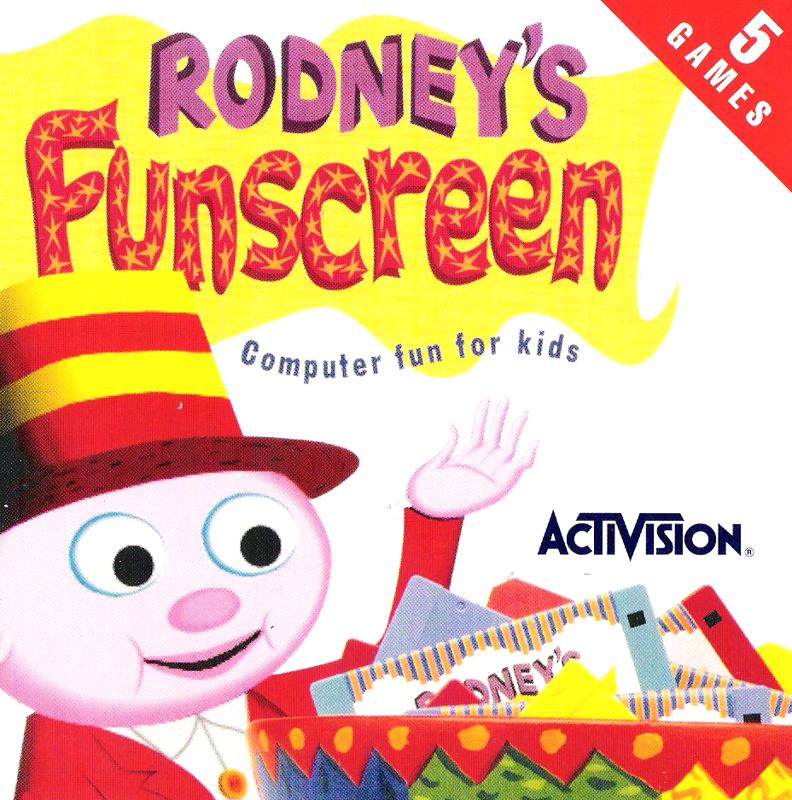
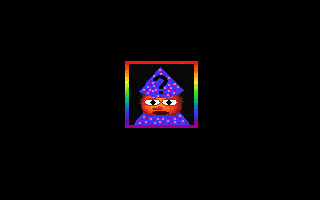
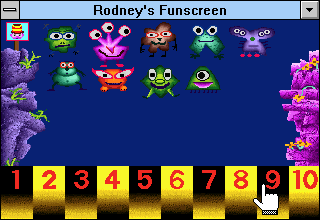
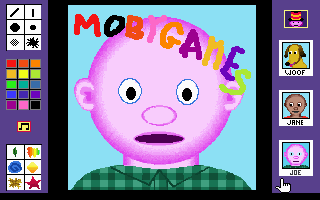
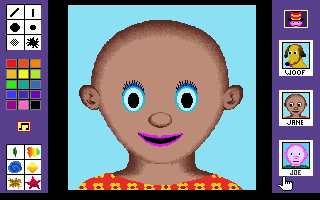
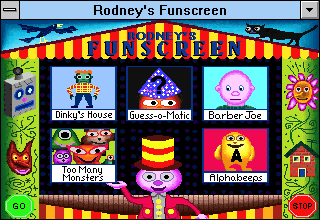



Reviews
There are no reviews yet.